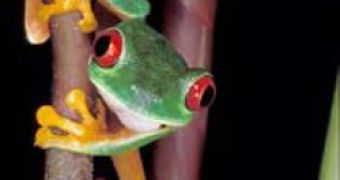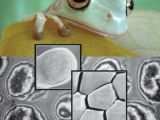They should have named him Frogman, not Spiderman.
Because the amazing ability to stick to smooth surfaces even when they are tilted well beyond the vertical is a trait displayed not particularly by spiders and insects, but also by many tree frogs and some lizards called geckos, even if by different methods.
Some small tree frogs can even adhere to surfaces when they are completely upside down. Conversely, when walking or jumping, these frogs can detach their toe pads easily.
This is a fascinating ability that could be useful in many domains of human activity. That's why a team from the University of Glasgow has investigated this on tree frogs from Trinidad. "The toe pads of tree frogs are coated with a thin mucus which adhere to surfaces by wet adhesion, like wet tissue paper sticking to glass. The process by which they detach their toe pads is called peeling and is akin to us removing a sticking plaster from ourselves," explained lead researcher Dr Jon Barnes.
"We were keen to understand why a tree frog on an overhanging surface didn't simply peel off rather than adhere."
The team investigated adhesive and frictional forces simultaneously on individual toe pads of White's tree frogs (Family Hylidae), while changing the surface angle. They found that the change from adhesion to peeling is a gradual process, during which the adhesive forces decrease at angles above 90?.
Thus, these amphibians keep a grip by maintaining the angle of their toes to a surface at a low value, and detach when the angle rises beyond 90?.
By investigating the behavior of the frogs the team could correlate this observation with the way the animals positioned their legs: they spread their legs out sideways to decrease the angle formed between their feet and the surface.
The investigators also focused on the problem experienced by larger tree frogs, which can not adhere to surfaces very well as - because of their weight - the adhesive forces do not work so effective like in the case of smaller frogs.
To partially compensate the problem, larger frogs present the ability to grasp objects, and can climb in a similar way the monkeys do. This enables the largest species of tree frog to inhabit the higher tree canopy, while smaller species are often encountered in shrubs just a meter or so above the ground.

 14 DAY TRIAL //
14 DAY TRIAL // 
